THE THIRD MAN
“The Third Man” is a 1949 film noir directed by Carol Reed and starring Joseph Cotten and Orson Welles. The film is set in post-World War II Vienna and tells the story of a pulp novelist named Holly Martins who arrives in the city to visit his old friend, Harry Lime, only to discover that Lime has recently died in a car accident. As Martins investigates Lime’s death, he becomes embroiled in a web of deceit and corruption.
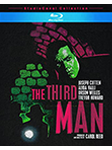
Director: Carol Reed
Year: 1949
Stars: Joseph Cotten, Alida Valli, Orson Welles
Awards: Oscar, Cannes Grand Prix, BAFTA
PLOT
The story begins with Holly Martins, an American pulp Western novelist, arriving in Vienna at the invitation of his childhood friend, Harry Lime. Upon his arrival, Martins learns that Lime has recently died in a car accident. Martins is devastated by the news, but his grief is soon replaced by suspicion when he meets two British military police officers who suggest that Lime’s death may not have been an accident.
Martins decides to investigate Lime’s death on his own, which leads him to question Lime’s former associates and acquaintances. His inquiries lead him to the realization that Lime was involved in a racketeering scheme that involved diluting penicillin, resulting in the deaths of many innocent people. Lime’s associate, Baron Kurtz, is revealed to be the mastermind behind the scheme.
Martins is initially reluctant to believe the accusations against his friend but eventually confronts Lime, who admits to his crimes. Lime tries to convince Martins that he did what he did for the greater good, but Martins refuses to accept Lime’s justification and attempts to turn him over to the authorities. However, Lime escapes into the night, leaving Martins alone on a Ferris wheel.
Martins then encounters Lime’s lover, Anna Schmidt, a Czechoslovakian actress who was traumatized by the war and is emotionally dependent on Lime. Schmidt reveals to Martins that Lime had planned his own death and was using Martins as a pawn in his scheme. Lime planned to fake his own death and escape with Kurtz’s help. Schmidt urges Martins to leave Vienna and forget about Lime, but Martins cannot let go of the moral implications of Lime’s actions.

The film’s famous final scene takes place at the cemetery where Lime was buried. Martins watches as the coffin is lowered into the ground, but then he spots Schmidt in the distance. As he walks towards her, Lime emerges from the shadows, revealing that he faked his own death and is still alive. Lime tries to convince Martins to join him in his scheme, but Martins refuses, telling him that he would rather see him dead. Lime, realizing that his schemes have cost him the love and loyalty of his friend, retreats into the shadows.
VISUAL STYLE
The visual style of “The Third Man” is one of the film’s most notable and influential elements. Directed by Carol Reed, the film features striking cinematography by Robert Krasker that combines stark contrasts of light and shadow, off-kilter camera angles, and atmospheric location shooting to create a sense of unease and moral ambiguity.
The film’s opening sequence is particularly memorable, with the camera lingering on the empty streets and dilapidated buildings of post-war Vienna, creating a haunting and ominous atmosphere. Krasker’s use of high-contrast lighting and deep shadows adds to the film’s sense of darkness and intrigue, with many scenes shot in the city’s underground tunnels and sewers, lending the film a sense of claustrophobia and danger.
One of the most iconic visual elements of the film is the Ferris wheel sequence, which takes place in the Prater amusement park. The scene is shot entirely at night, with the lights of the Ferris wheel casting long shadows across the characters’ faces. The sequence is a masterclass in tension and suspense, with Holly Martins and Harry Lime’s conversation taking place against the backdrop of Vienna’s skyline, as the wheel moves ever closer to the top.
In addition to its use of lighting and framing, “The Third Man” also features innovative and creative camera work. The famous “Dutch angles” are used throughout the film, tilting the camera at an angle to create a sense of unease and disorientation. The use of close-ups and extreme close-ups is also effective, conveying the characters’ emotions and inner turmoil.
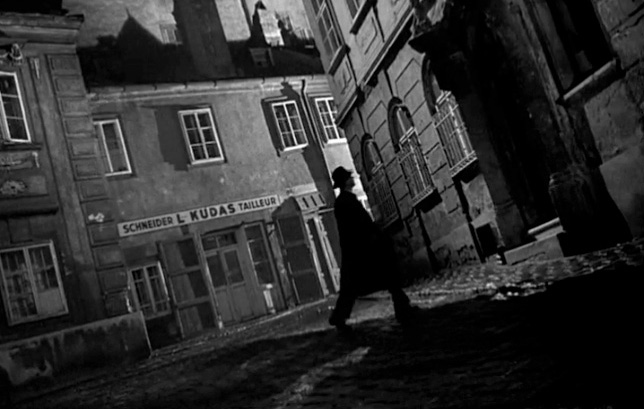
Finally, the film’s use of location shooting adds to its visual impact, with many scenes filmed on the streets and in the bombed-out buildings of Vienna. The city’s architecture and layout are used to great effect, with the maze-like streets and shadowy alleyways providing the perfect backdrop for the film’s sinister plot.
Overall, the visual style of “The Third Man” is a masterclass in film noir aesthetics, combining innovative camera work, striking lighting, and atmospheric location shooting to create a sense of unease, moral ambiguity, and visual impact.
THEMES
The film explores complex themes related to morality, loyalty, and the nature of evil:
Morality and ambiguity
“The Third Man” is a film that grapples with the idea of morality and the blurred lines between good and evil. Holly Martins, the film’s protagonist, is a struggling writer who is caught up in a web of intrigue and corruption. Throughout the film, he struggles with his own moral compass as he learns the truth about his friend’s criminal activities. The film ultimately suggests that morality is not always clear-cut and that people must often make difficult choices in ambiguous situations.
The corrupting influence of power
The film also explores the corrupting influence of power and the ways in which it can lead individuals to commit immoral acts. Harry Lime, the film’s antagonist, is a character who is driven by his desire for power and wealth. His actions ultimately lead to the deaths of innocent people, and he becomes increasingly ruthless as he becomes more successful. The film suggests that power can be a corrupting force that can lead individuals to abandon their moral principles.
The consequences of war
“The Third Man” is set in post-World War II Vienna, and the aftermath of the war is a central theme of the film. The city is divided between the occupying Allied powers, and the destruction caused by the war is evident in the bombed-out buildings and streets. The film suggests that the chaos and destruction of war can have long-lasting consequences that linger even after the fighting has ended.
Loyalty and betrayal
The film explores the theme of loyalty and the ways in which it can be tested by betrayal. Holly Martins initially arrives in Vienna with a strong sense of loyalty to his friend Harry Lime, but as he learns more about Lime’s criminal activities, his loyalty is tested. Similarly, Lime’s lover Anna Schmidt is torn between her loyalty to Lime and her love for Martins. The film suggests that loyalty is a complex emotion that can be tested by circumstance and conflicting desires.
RECEPTION & AWARDS
“The Third Man” was released in 1949 to mixed reviews from critics and a somewhat lukewarm response from audiences. While some critics praised the film’s innovative cinematography, striking visual style, and engaging performances, others found the plot to be convoluted and the characters underdeveloped.
Despite its mixed reception, the film did have its champions. The French critics, in particular, were very enthusiastic about the film, and it went on to win the Grand Prix at the 1950 Cannes Film Festival. However, it wasn’t until the film was re-released in the United States in 1950 that it gained a wider audience and began to receive the acclaim it is now known for.
Amongst critics the film received a number of awards including:
Academy Award for Best Cinematography: The film’s striking visual style, which included innovative camera angles and use of light and shadow, earned cinematographer Robert Krasker an Academy Award for Best Cinematography in 1951.
Cannes Film Festival Grand Prix: “The Third Man” was awarded the Grand Prix at the 1950 Cannes Film Festival, which is now known as the Palme d’Or, the festival’s highest honor.
British Academy Film Awards: The film was nominated for six British Academy Film Awards, including Best Film, Best British Film, and Best Director, winning the award for Best British Film.
National Board of Review: The film was named Best Film by the National Board of Review in 1949.
American Film Institute: In 1999, the American Film Institute ranked “The Third Man” as the 57th greatest film of all time on its list of 100 greatest American films.
POPULAR CULTURE
“The Third Man” has had a significant impact on popular culture since its release in 1949, inspiring numerous adaptations, parodies, and references in various media. Here are some examples:
Music: The film’s iconic zither score, composed by Anton Karas, has been parodied and referenced in numerous songs and films, including the theme song for the TV show “The Simpsons.”
Literature: The film has inspired a number of adaptations and homages in literature, including a novel by Graham Greene, who wrote the screenplay for the film.
Film and Television: The film has been referenced and parodied in numerous films and television shows, including “The Simpsons,” “Family Guy,” and “Austin Powers: International Man of Mystery.” It has also been remade as a television series and a radio play.
Video Games: The film has also inspired a number of video games, including the popular game “BioShock,” which features a level inspired by the film’s iconic Ferris wheel scene.
Fashion: The film’s iconic fashion has also inspired designers and fashion enthusiasts. The film’s lead actor, Joseph Cotten, wears a distinctive coat that has become known as the “Third Man coat.” The coat has since become a popular fashion item, with many designers and brands creating their own versions.
Art: “The Third Man” has also inspired numerous works of art, including paintings and photographs, that pay homage to the film’s unique visual style and striking use of shadow and light.
Advertising: The film has also been referenced and parodied in numerous advertising campaigns, including a famous British Telecom ad that recreated the film’s iconic Ferris wheel scene.
Tourism: The film has also had an impact on tourism, with many fans of the film visiting Vienna to see the locations where the film was shot, including the iconic sewers scene.
“The Third Man” has left a lasting mark on popular culture, inspiring numerous adaptations, parodies, and references in various media. The film’s innovative visual style, iconic score, and memorable characters continue to captivate and inspire audiences today.
Explore more Film Noir
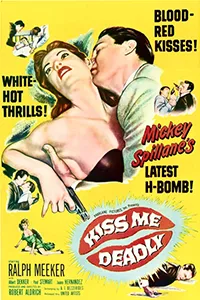
“Kiss Me Deadly”: A hard-boiled private detective searches for a mysterious woman and a dangerous suitcase.
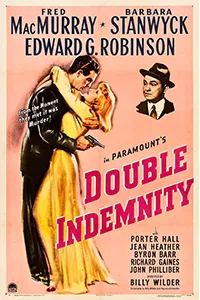
A gripping film noir about a seductive woman who convinces an insurance salesman to plot a murder.
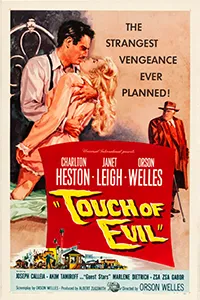
Orson Welles’ classic film noir, Touch of Evil, explores corruption and moral ambiguity in a Mexican border town.